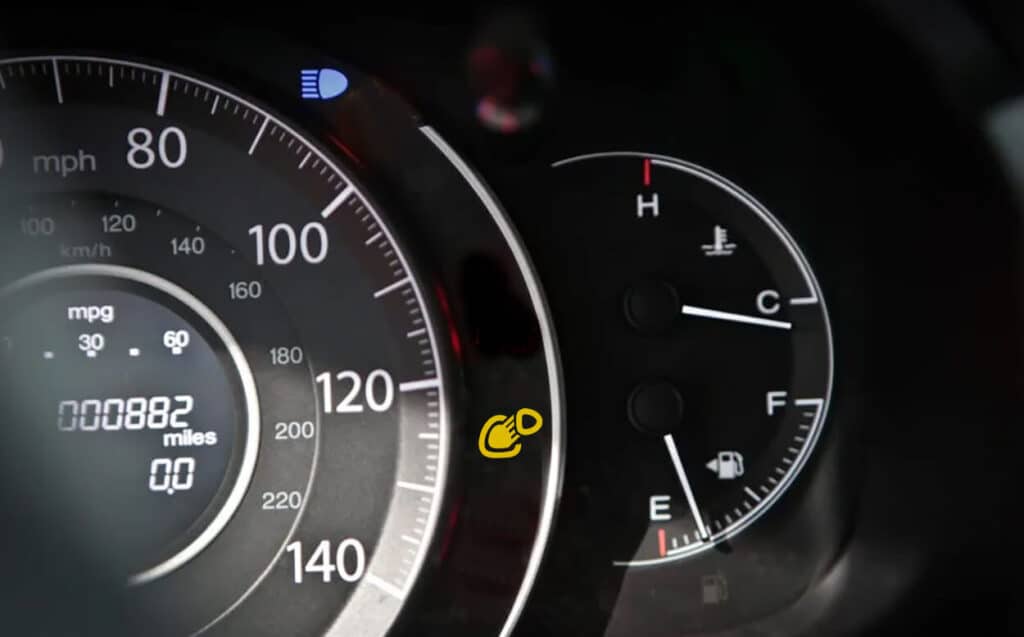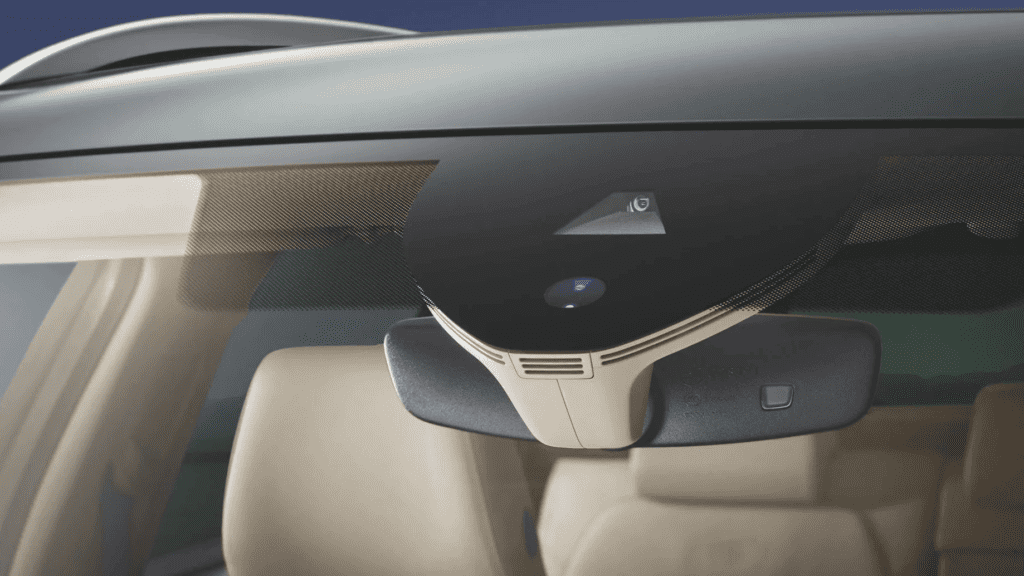Forecasting a Clear Understanding—The Role of Rain and Light Sensors in Modern Cars
In the evolving landscape of automotive technology, rain and light sensors are steadily becoming par for the course. These nifty gadgets do more than just detect raindrops; they’re all about optimizing your driving experience by adjusting headlights and windshield wipers automatically. Imagine not having to fumble with switches while driving through a sudden rainstorm at dusk. It’s like having a co-pilot who’s got your back.
Illuminating the Indicator: What Is the Warning Light on the Rain Sensor?
Imagine driving along a winding road, captivated by the mesmerizing fall foliage or the stunning city skyline, when a peculiar light pops up on your dashboard. It resembles a raindrop or perhaps even a cloud—no, it’s not predicting tomorrow’s weather, nor is it the latest emoji fad. This specific indicator light is your car’s not-so-subtle way of saying, “Hey, you! Something’s up with the rain or light sensor, and you should probably pay attention!” It’s akin to your car sending you a text message, except that ignoring this one is a risk you don’t want to take.
This warning light is part of a sophisticated system designed to make your life easier and safer. When functioning correctly, these sensors automate headlight activation in low light and adjust your windshield wiper speed according to rainfall. Pretty neat, right? But when that dashboard light pops on, it’s signaling that this system is compromised. It may mean that your automatic wipers will continue their lazy dance despite a torrential downpour or that your headlights won’t automatically turn on as you enter a tunnel. The light could be triggered by a range of issues—anything from dirt obstructing the sensor to a full-on system malfunction. In simpler terms, your car’s built-in ‘butler’ who adjusts the wipers and lights for you is saying, “I’m not feeling so well; can you check on me?”
The purpose of this light is to give you a chance to act before minor inconveniences turn into major safety hazards. So if you see it, don’t delay; take your car in for a check-up. Even if the sensor doesn’t require a full replacement, it might just need a simple recalibration or cleaning—preventative measures that can save you from potential future headaches. Remember, this isn’t a warning you want to ignore. It’s not just about convenience; it’s about ensuring you and your passengers have a safe driving experience.

Downpour Diagnostics: Common Causes of Rain Sensor Malfunction
Rain sensors are pretty much the wizards of modern cars, automating wiper speed and headlights so you can focus on driving. But even wizards can have off days. One common cause of sensor malfunction is dirt and grime buildup. Imagine trying to see through a dirty window; the sensor experiences something similar. Its ability to detect moisture diminishes, making it less responsive or even completely inactive. Often, a simple cleaning of the windshield and sensor area can restore it back to its magical self.
Another frequent culprit is calibration, or rather, mis-calibration. This usually happens when the sensor is either replaced or when the windshield has been tampered with. A poorly calibrated sensor can result in false activations or complete failure to detect rain or changes in light. In such cases, recalibration is key. Though it sounds technical, most auto service centers can recalibrate the sensor, getting it back on its feet and you back on the road. Some vehicle models even allow for DIY recalibration—though we’d recommend professional help to avoid any wizardly mishaps.
Lifespan and Longevity: How Long Do Rain Sensors Last?
Ah, the question of longevity. Generally speaking, rain sensors are like the Keith Richards of car parts—they seem to go on forever. Most sensors are designed to last as long as the car itself, so you’re unlikely to face issues with the device throughout the average lifespan of your vehicle. These sensors are built robustly, able to withstand years of exposure to elements like rain, snow, and even those awful bird droppings that sometimes adorn your windshield.
However, no part is invincible. Like an aging rock star, your sensor will start to show signs that it’s not as spry as it used to be. Frequent malfunctions, irregular activations, and failure to operate can be early signs that the sensor is approaching its golden years. In such instances, it’s best to get it checked out by a professional before it bows out of service altogether. Don’t wait for a torrential downpour to realize that your rain sensor is ready for retirement; preventative maintenance can save you both headaches and repair costs.
Wind, Trees, and Phantom Triggers: What Really Sets Off the Sensor
Contrary to urban myths, the rustle of leaves or a strong gust of wind isn’t going to set off your rain sensor.
• Advanced Moisture Detection: Your rain sensor is built to detect moisture, not movement. So despite what some may think, it’s not easily tricked by external factors unrelated to rain or mist.
• Discerning Design: These sensors use infrared technology to detect moisture, making them highly precise. This means your sensor is unlikely to activate from a rustle of leaves, wind, or even small insects that may cross its path.
• Phantom Triggers? Not Likely: While it’s tempting to blame false alarms on mysterious triggers, the reality is usually less exciting. Software glitches and sensor malfunctions are often behind those unwarranted activations.
• Understanding Misfires: On the rare occasion that your rain sensor does go off without reason, it’s more likely due to a calibration issue or obstruction on the windshield rather than a phantom trigger like the wind or trees.
Warning Light Workaround: Testing, Deactivating, and Calibration
So you’ve noticed that your rain and light sensor warning light is acting like a diva, making frequent unscheduled appearances on your dashboard. Maybe it’s causing your wipers to oscillate erratically or your headlights to flash like a disco ball. Before you reach for the panic button, there are ways to troubleshoot the system yourself. Most modern cars allow you to disable the rain and light sensor temporarily through the vehicle’s settings, often accessible via the onboard computer or infotainment system. This “time-out” will give you a reprieve from any erratic behavior while you decide on a long-term course of action. You can also do a manual test by lightly spritzing water on the sensor (usually located on the windshield) to see if it triggers the wipers, thereby checking its basic functionality.
However, these are merely Band-Aid solutions. If your sensor is repeatedly making its presence known via that pesky warning light, it’s probably crying out for professional intervention. Here’s where recalibration comes into play. This process fine-tunes the sensor to factory settings and ensures it reacts accurately to environmental changes. You could think of it as the equivalent of a piano tuning, necessary for everything to function harmoniously. Recalibration typically involves a series of tests and adjustments performed with specialized equipment. The procedure can cost anywhere from $50 to $100, but it’s a relatively minor investment considering it restores one of your vehicle’s crucial safety features. In some instances, this might even save you the expense and hassle of a complete sensor replacement.

Possible Repairs and Pocket Pinches: Potential Fixes and Cost Estimates
If your sensor’s gone rogue, repairs could range from simple recalibrations to part replacements:
• Calibration Check: If your sensor seems off, recalibration is usually the first step in troubleshooting. Expect to pay around $50-$100 for this service, which is often enough to resolve minor issues.
• Sensor Replacement: For a completely defunct sensor, replacement is usually the next logical step. The cost can vary widely based on your vehicle’s make and model but generally hovers around $200 or more.
• Integrated Systems: In some modern cars, the rain sensor is integrated into the windshield. In such cases, the cost could go even higher, especially if the entire windshield needs replacement.
• DIY vs. Professional Repairs: Some enthusiasts may opt for a DIY fix. While this could save some money upfront, incorrect installation or calibration can lead to more expensive issues down the line.
• Labor Costs: Don’t forget to factor in labor costs if you’re going to a traditional auto repair shop. These can sometimes be a significant part of the total repair bill.
• Geographic Variations: Repair costs can also vary by location. Urban centers might charge more for the same services compared to smaller towns or rural areas.
• Warranty and Insurance: Always check if your sensor is under warranty, or if your insurance covers such repairs, as this can significantly affect the out-of-pocket costs.
Don’t Rain on Your Own Parade—Why Ignoring the Sensor Could Be Risky
Ignoring that tiny warning light might seem like no big deal, but it’s akin to walking on a tightrope without a safety net. Being attuned to what your vehicle is communicating can go a long way in ensuring a safer and more convenient driving experience. If you’re facing issues with your rain and light sensor and need professional assistance, consider booking an appointment with Uchanics. As a trusted mobile mechanic service in Canada, they come to you, saving you both time and hassle.
Your car deserves the best. Don’t let a malfunctioning sensor rain on your parade. Book an appointment with Uchanics today and ensure a smooth, safe drive no matter the weather.
